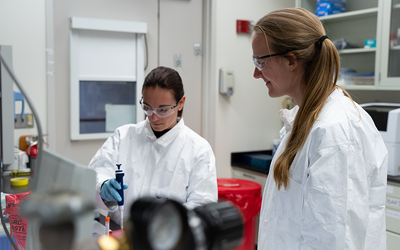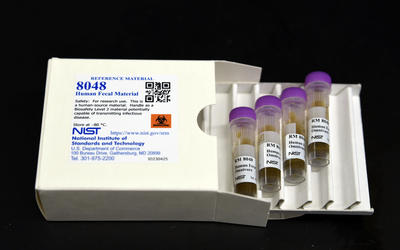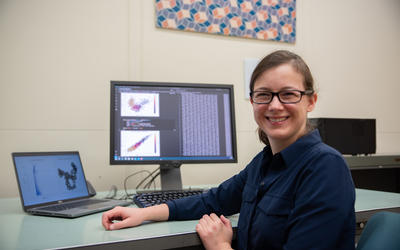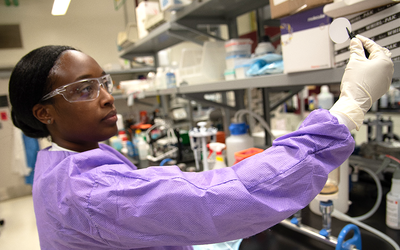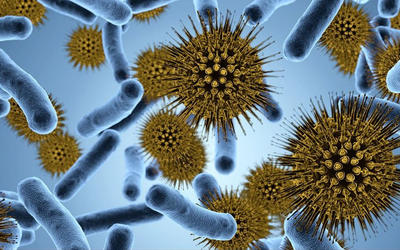Trillions of microorganisms, communities known as “microbiomes,” live on and inside us, in our homes and the air we breathe, and in soil and plants. Most microbiomes contribute to necessary functions within us and our environments, like digestion and plant growth. We are largely living in successful partnership with them. A better understanding of these complex microbial communities would help us harness them for applications to human and animal health, agriculture and food safety, water treatment, manufacturing, renewable energy, and the detection of biological threats.
For microbiome research to more quickly deliver products to the clinic and market and make the best use of taxpayer funding, the field requires standardized protocols for sample collection, and reference materials and data. These standardized tools help the many organizations working on microbiome research reproduce each other’s work and build upon it. Standards also enable “comparability”: results obtained in different labs with different procedures can be meaningfully compared to one another with more certainty, which is particularly important when making decisions about treating patients.
NIST develops standards, methods, tools, and technology to advance the reliability of microbial community measurements, pathogen detection and identification, and microbial cell quantification for use in various sectors of the bioeconomy.
NIST's programs in microbial metrology are supported by our deep expertise in measurement science, microbiology, metabolomics, metagenomics, flow cytometry, and bioinformatics. The microbiome field has seen disruptive technological innovations over the last 2 decades, paving the way for new science. We are developing advanced measurements, documentary standards, and reference materials to improve confidence in microbial measurements. For example, NIST scientists led the development of RM 8376, a Mixed Microbial Genomic DNA standard designed to assess the analytical performance of metagenomic next generation sequencing (NGS)-based pathogen detection. The team is now working towards the development of whole cell microbial reference materials including the generation of single strain and mixed multi-strain materials.
NIST co-founded and leads the International Microbiome and Multi-Omics Standards Alliance (IMMSA), an open consortium of microbiome-focused researchers from industry, academia, and government that exists for the mutual benefit of the entire microbiome scientific community. IMMSA currently has over 700 members and convenes recurring webinars that provide a platform for researchers to share ideas and discuss challenges related to microbiome measurement assurance.
The NIST-led Rapid Microbial Testing Methods Consortium aims to support the use of rapid methods to detect microbial contaminants in regenerative medicine and advanced therapy products.
Wastewater surveillance is a promising approach to monitor biological and chemical contaminants on a community level and has recently been shown effective for the early detection of SARS-CoV-2 outbreaks. While much has been learned during the COVID-19 pandemic response, much work remains to establish a wastewater surveillance capability poised to address new targets as they emerge. NIST is working with DHS and EPA to develop standards that help enable robust, comparable wastewater surveillance. NIST, in collaboration with the EPA, is also developing a DNA reference material to assess the analytical performance of EPA-developed water quality testing methods.
News and Updates
Blog Posts
Explainers and Blog Posts
Key Accomplishments
- NIST responded to the expanding mpox (MPXV) outbreak with the development of an Mpox Research Grade Test Material (RGTM 10223). The material is used for validating and ensuring the accuracy of mpox tests and is freely available to testing laboratories and diagnostic test manufacturers worldwide. The mpox test uses PCR to detect genetic sequences from the virus that causes the disease. The NIST RGTM contains those genetic sequences and can be used by laboratories as a positive control. Read the news story.
- NIST established the NIST Rapid Microbial Testing Methods (RMTM) Consortium in 2020 to accelerate the adoption of rapid and validated methods for ensuring the safety and quality of advanced therapies, including cell therapy, gene therapy, and tissue engineered products. Read a blog post about the consortium.
- NIST now offers the Mixed Microbial Pathogen DNA Standard RM 8376, the first of its kind metagenomic benchmarking tool, for assessing the analytical performance of NGS-based pathogen detection. The material consists of genomic DNA purified from 20 different organisms and has been assigned non-certified values for genome copy number based on digital droplet PCR. This project was the foundational project in establishing the NIST microbiome program and has led to the development of other NIST products for pathogen detection.
- NIST developed a living yeast cell reference material RM 8230 as a safe training material for biological response scenarios. The material consists of live engineered yeast cells characterized for total cell count and colony forming units (CFUs) and serves as a known input for assessing and comparing cell counting methods and DNA-based detection approaches. It also supports minimal risk field training in biothreat detection. Read the news story.
- NIST served as the Independent Verification and Validation (IV&V) team for the DARPA/BTO Friend or Foe program. In this role, NIST developed complex microbial mixtures containing greater than 50 strains, with and without simulated environmental matrices to test and validate the technologies being developed.
- NIST co-founded and leads the International Microbiome and Multi-Omics Standards Alliance (IMMSA), an open consortium of microbiome-focused researchers from industry, academia, and government that exists for the mutual benefit of the entire microbiome scientific community. IMMSA convenes recurring webinars that provide a platform for researchers to share ideas and discuss challenges related to microbiome measurements.
- NIST participated in the FAST Track Action Committee on Mapping the Microbiome (FTAC-MM) to identify Federal investments, research needs, and resource gaps to develop an integrated Federal plan for microbiome research priorities. One of the top recommendations of the FTAC-MM was to support the development and adoption of standards and reference materials for the microbiome scientific community.
- NIST, in partnership with the Janssen Human Microbiome Institute (JHMI) and other industry partners, hosted an international interlaboratory study referred to as the “Mosaic Standards Challenge” designed to assess the impact of the multitude of methodological variables commonly used during microbiome metagenomic measurement workflows on the results. In total, over 50 labs participated to collectively measure 350 samples. Data analysis and manuscript preparation are underway.
- NIST conducted a Gut Microbiome Metabolomics Interlaboratory Study within the metabolomics community to survey measurement variability on analysis of human gut microbiome (whole stool) metabolite measurements. The results revealed large disparities among participants using a given analytical platform, likely due in part to variations in the methodological variables.
- NIST has developed a candidate human whole stool reference material and established an effort with the gut microbiome community to characterize the material for microbial and metabolite composition. NGS-based metagenomics and mass spectrometry- and nuclear magnetic resonance (NMR)-based metabolomics protocols are being developed and applied to identify and quantify components with clinical relevance.



